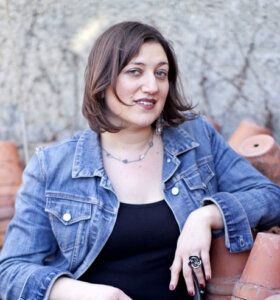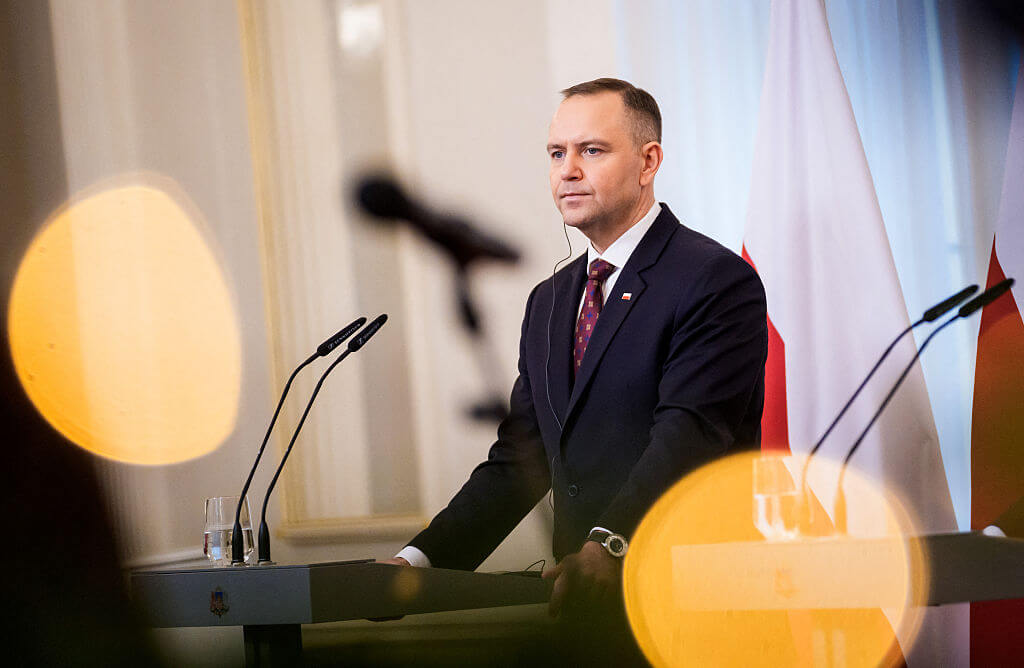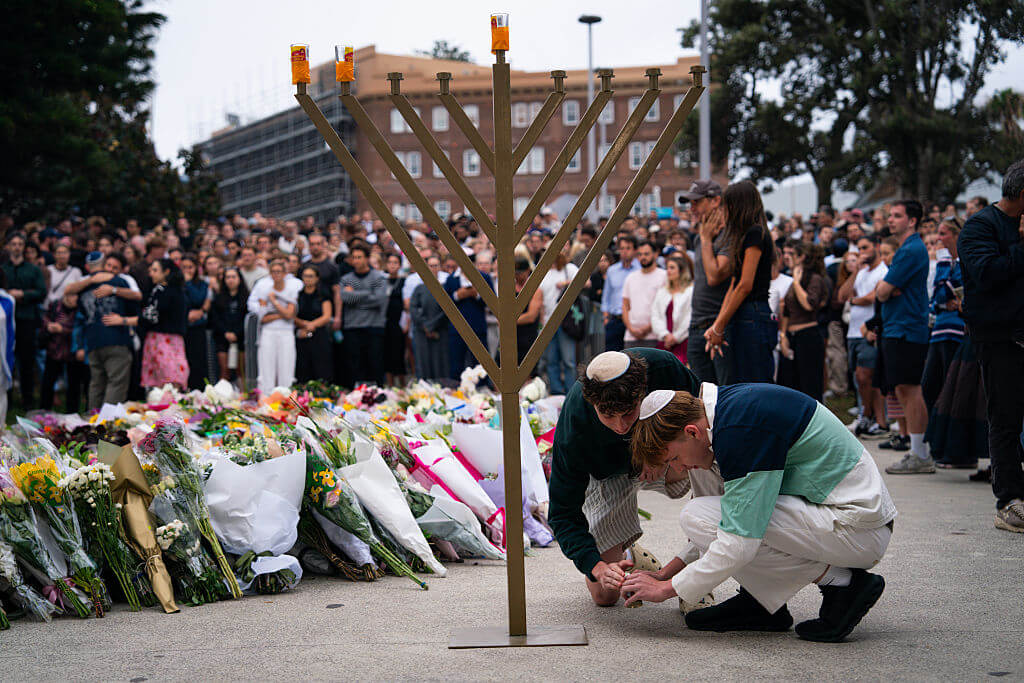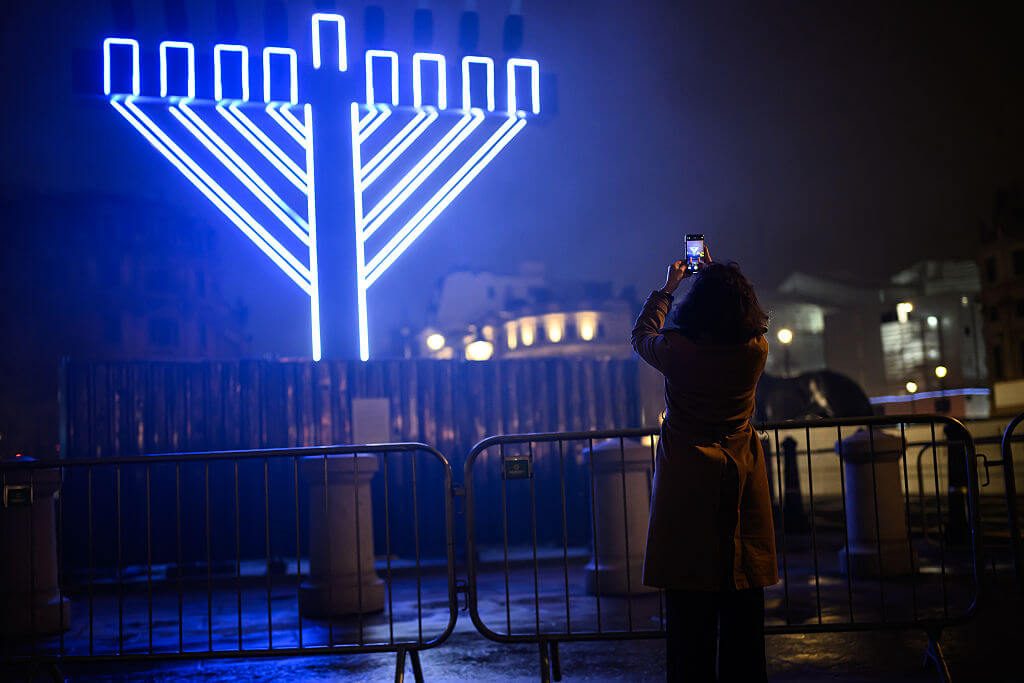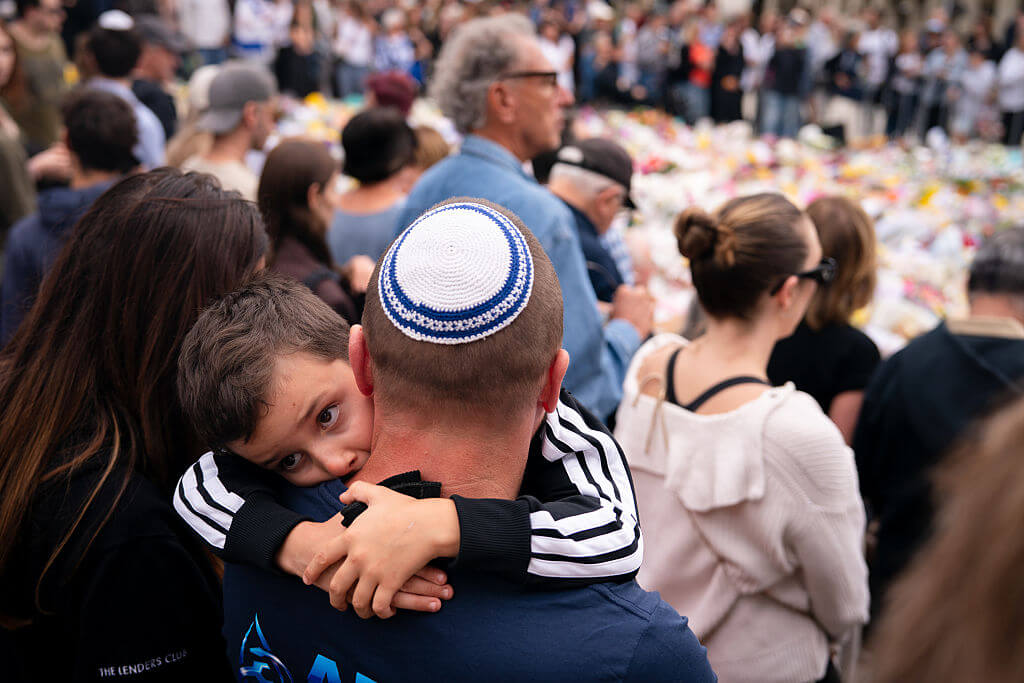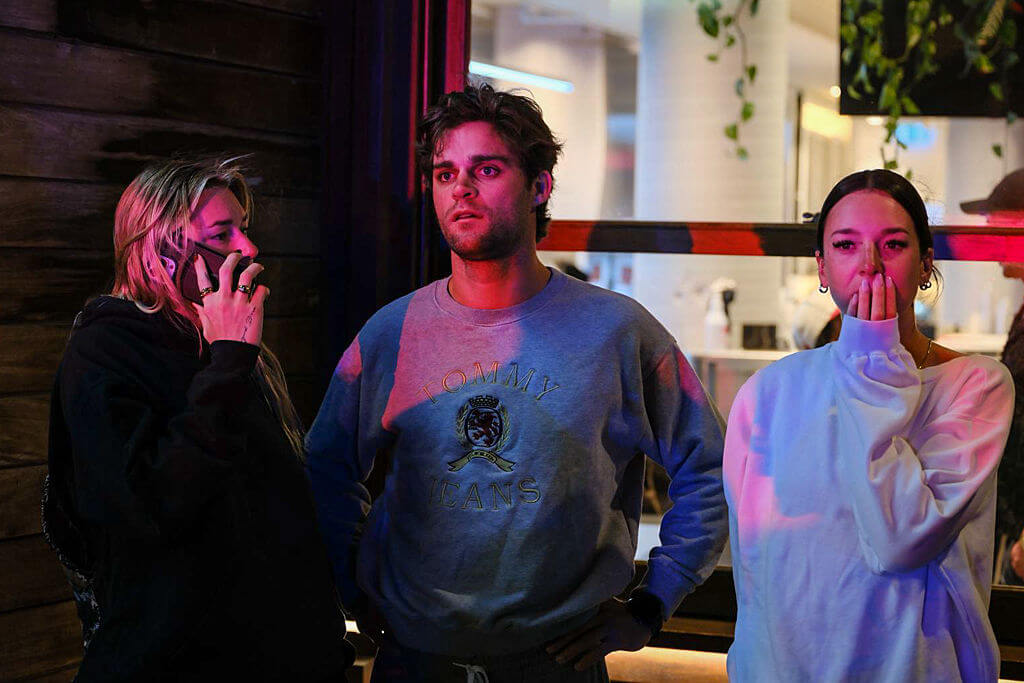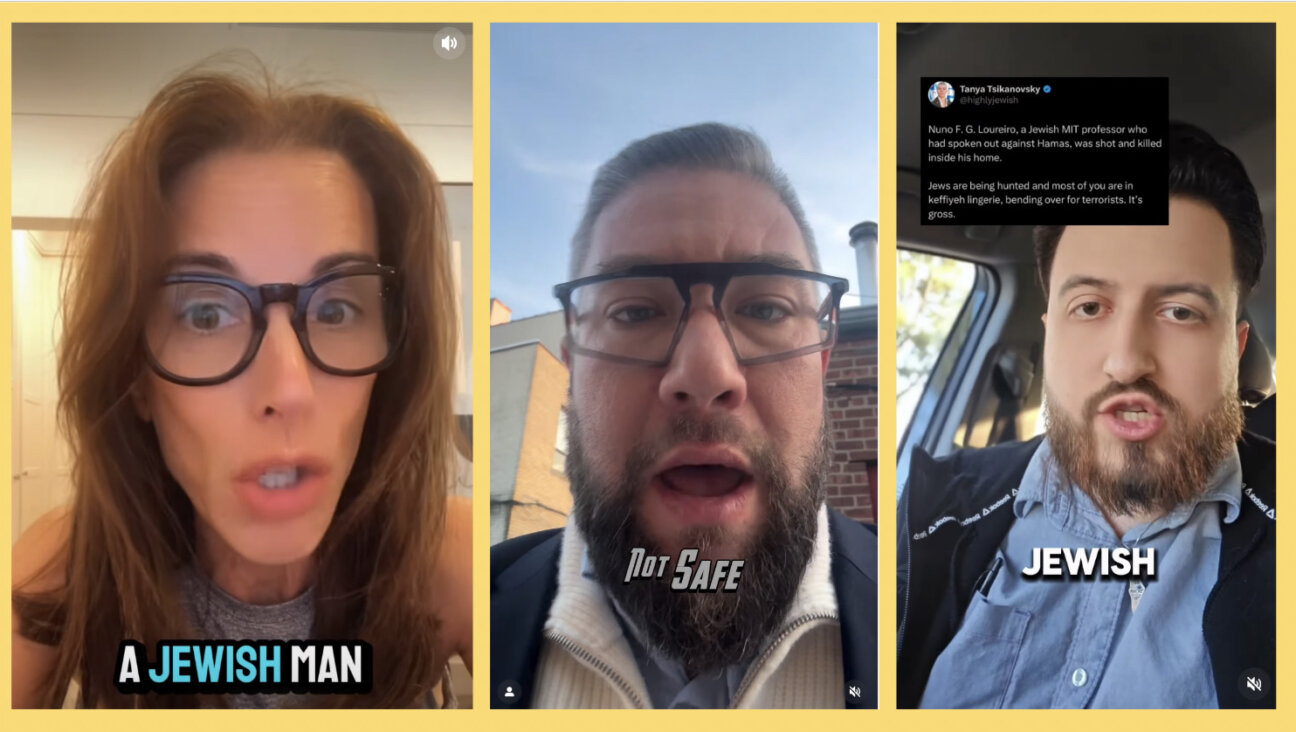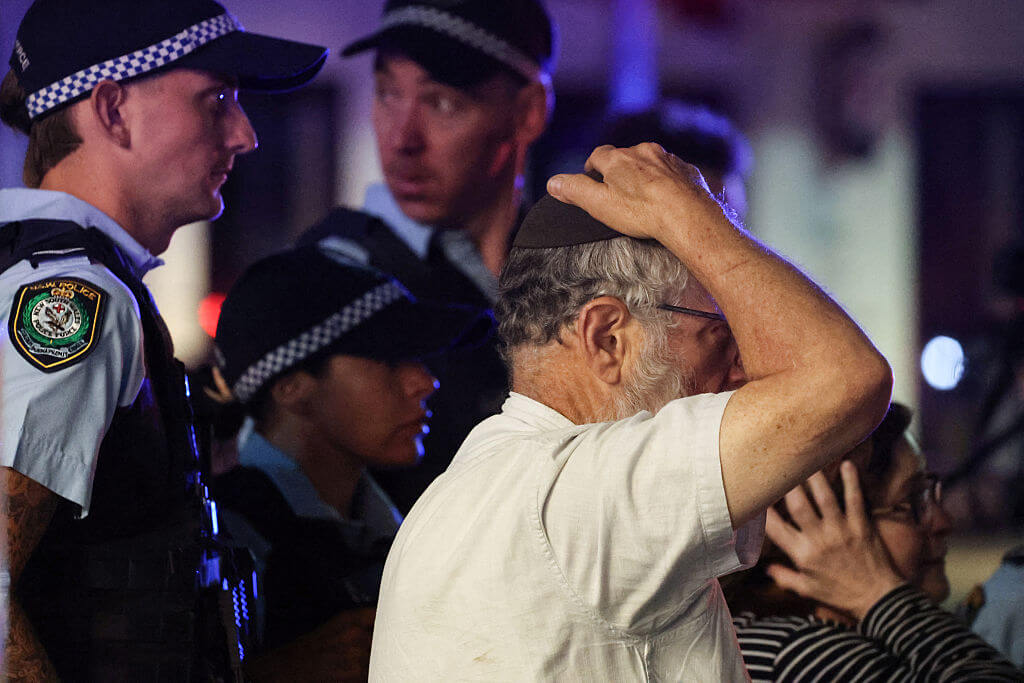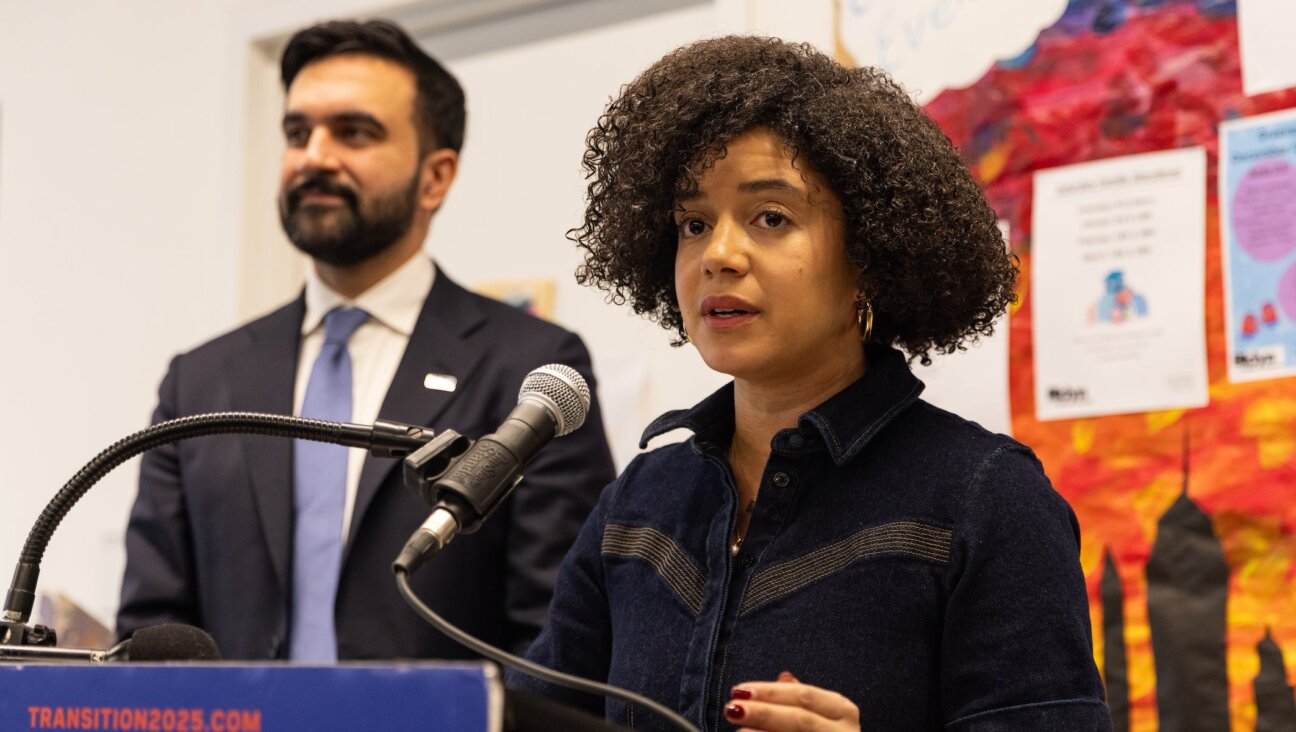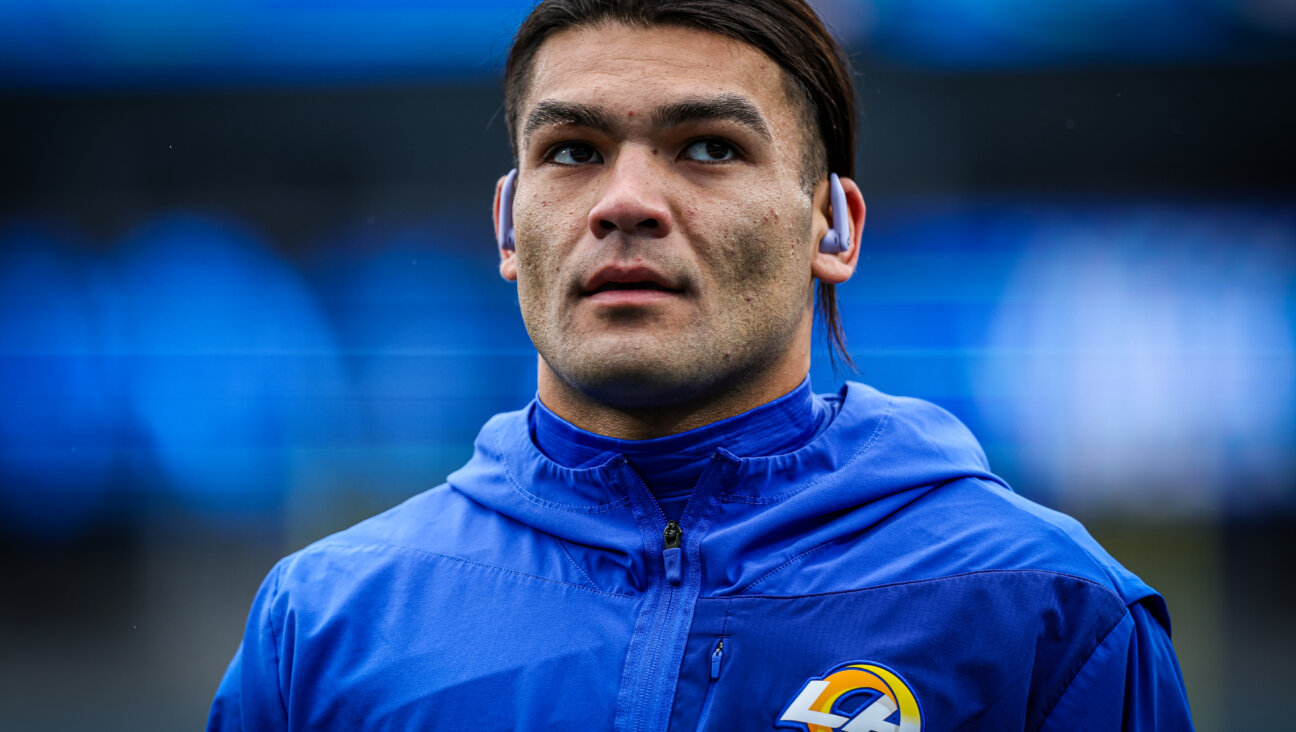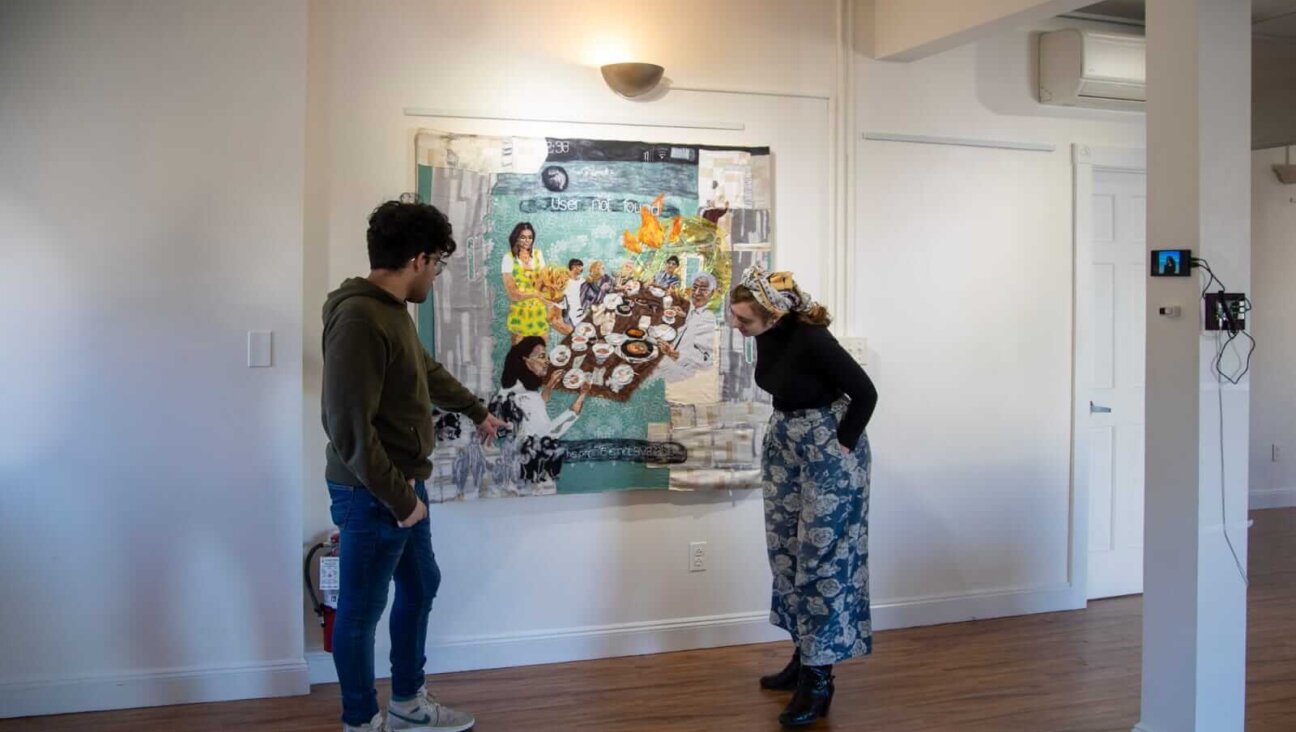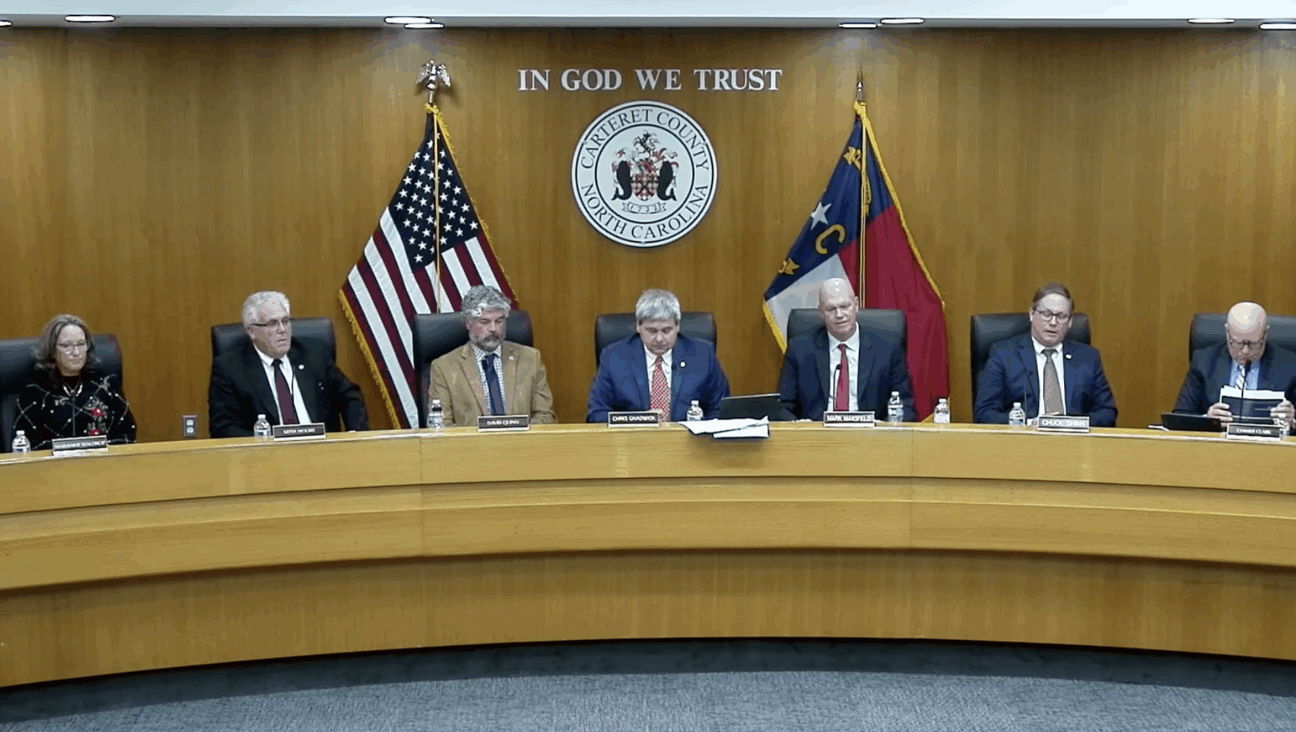The media is not showing the extent of Hamas’ barbarity — is that a mistake?
Respecting the families of murdered and tortured hostages is understandable, but it may come at the cost of truth
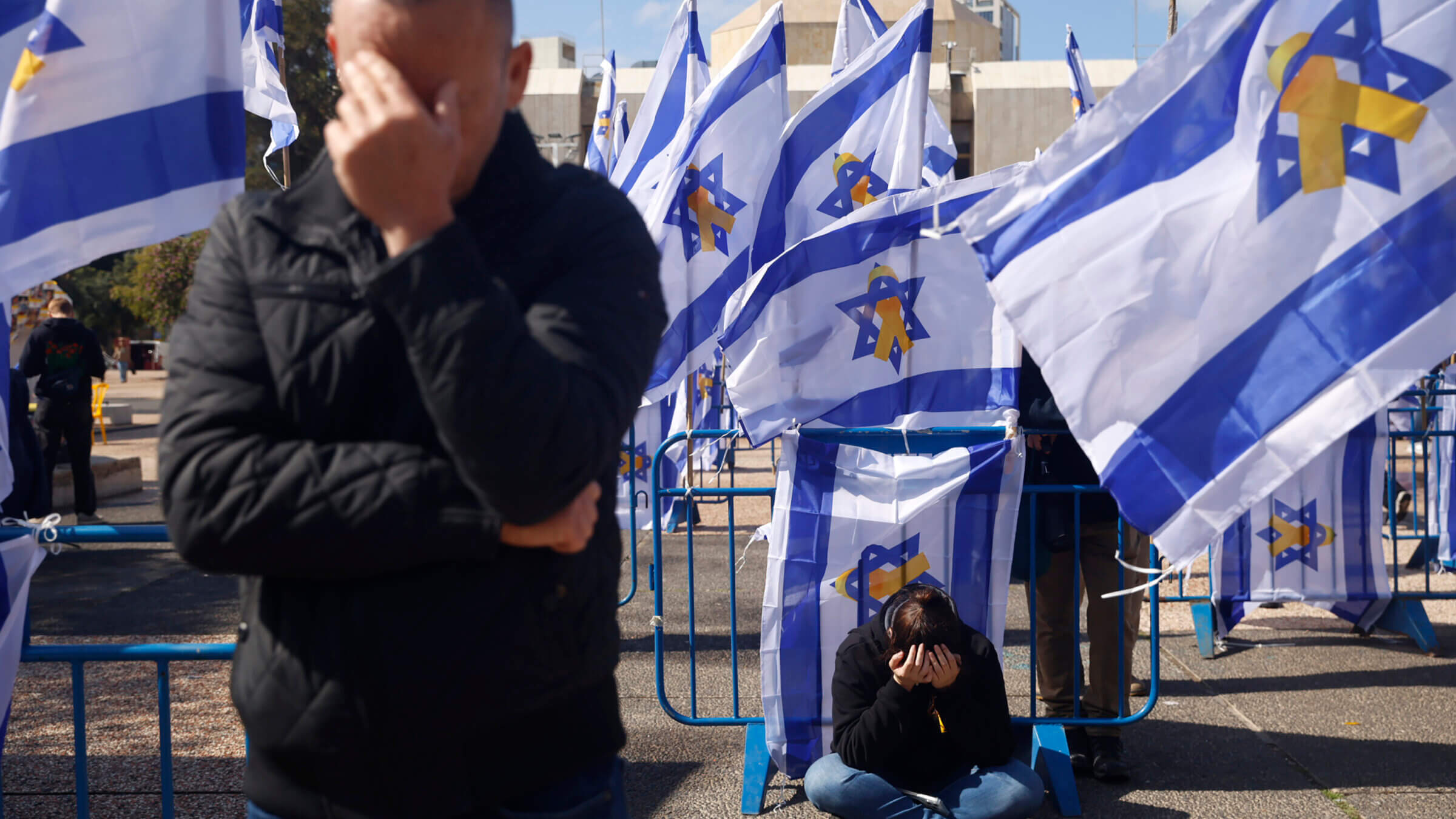
People react among Israeli flags in Hostage Square prior to the handover of four bodies taken by Hamas. Photo by Getty Images
This devastating moment is also about what is shown and not shown. It’s about what is happening and what is not happening, what is said and not said.
Last night, I watched as Israeli television reporters explained that they would not broadcast Hamas’ staged handover of four dead hostages.
One journalist said he had wondered whether Hamas would hold one of their “cynical” ceremonies with dead hostages, “and the answer is yes.”
This morning Israeli television — 2 p.m. in Israel, 6 a.m. in Chicago — was still entirely and gravely focused on the absolute a sadness enveloping Israeli society as Kfir, Ariel, and Shiri Bibas returned dead, along with 84-year-old Oded Lifschitz, who also returned dead.
Footage showed Israelis lining the route the flag-draped coffins traveled on their way to a medical examination, and crowds of Israelis waiting outside the medical center to honor the dead. Hostage Square in Tel Aviv was filled with hundreds of Israeli flags, despite the dicey weather.
Israeli journalists pointed out that other news organizations had followed Israel’s lead in not broadcasting the Hamas “ceremony” to preserve the dignity of the families. Reporters from multiple countries explained they would not amplify Hamas.
But social media told another story.
Hamas indeed celebrated the murders of the hostages, with the faces of the young children, their mother, and Oded Lifschitz painted in a red circle of blood — displayed on stage. The specific image was of the four in a bib of blood on Benjamin Netanyahu’s suit; Netanyahu was pictured as a demon with fangs and bloody cheeks. Celebratory music played as a large crowd came out with their children, including babies, to revel in the murder of Israeli babies.
I wonder if it’s the right strategy not to air what Hamas is doing, and to not show how Gazan civilians are responding. It’s a strange abdication of journalism’s traditional commitment to air both sides — or all sides — of a story.
Hiding Gruesome Visuals
After 10/7, most of the gruesome footage was shown only to journalists, and some world leaders. All over America, college students protested Israel before Israel had responded to the slaughter in any way. Writers wrote open letters condemning Israel. Huge anti-Israel marches took place in cities across Europe.
I understand not showing the aftermath of rape, of murder, of mutilation. There is a personal toll, even for non-relatives.
I spoke to a friend who watched 40-plus minutes of the footage of Oct. 7 shortly after it was made available to selected journalists — he didn’t sleep for weeks and needed months of therapy. He developed a stiffness in his shoulder that turned out to be a physical response to what he saw.
I also understand turning the sound off.
The partying over the dead Bibas babies, a slaughtered mother, and an 84-year-old man forcibly taken from his home to die as a captive is now imprinted on my soul.
To be fair, the media’s decision not to broadcast what Hamas is doing has precedent. In general, newspapers don’t show the dismembered bodies of victims of depravity. Names of rape victims are generally not reported, and even the crime shows many Americans are obsessed with don’t show, for instance, a beheaded body.
“Once you see your first headless body, you’ll never be the same,” a photographer I worked with in Jerusalem once told me. He was right; I saw this in the second intifada, whose deep effects are not discussed often enough.
But this perfectly understandable policy of non-coverage opens the door to fantasies and falsehoods — and to the refashioning of Hamas as a social-justice organization.
This is about neighbors
There has also not been enough coverage of who the hostages were and are as people.
The kibbutzim near Gaza are extremely liberal places, with many people who deeply supported peace with Palestinians and who devoted their lives to coexistence. Consider 84-year-old Oded Lifshitz, whose body is being examined by medical examiners in Israel as I write this. Lifshitz, according to the Jewish Chronicle, was a journalist and a peace activist who “volunteered with the Road to Recovery organization, which transports Palestinian children who are ill to hospitals in Israel.”
This moment is also about acknowledging that personal activism did not matter, that humanness did not matter, that the neighbor-to-neighbor betrayal is deep. That no one cares if you drove Gazan children to the hospital, or how many kids you drove, or at what ungodly hour of the night or early morning, in total darkness.
“The fact that the people who took babies and slaughtered them, these are our neighbors, how do we deal with it?” one Israeli news anchor said. “This is a terrible morning, full of mourning and agony.”
Yes, this is about neighbors, and how to deal with them. All those open letters don’t acknowledge that.
The lies we tell ourselves
As I scrolled through images of Gazans bringing their children — and babies in carriers — to celebrate the deaths of the Bibas children, I also saw photos of keffiyeh-clad students at Swarthmore College, where a campus building was occupied yesterday for a protest by Students for Justice in Palestine.
The Swarthmore student newspaper described the protesters’ “two demands: that the college drop its disciplinary cases against students for charges related to protests for Palestine and that the college divest from companies tied to Israel. “
This “protest” brought home to me the tremendous gap between coverage in various languages, and, frankly, the lies we are living through.
What would have happened if in the days after 10/7, all the protests in the world would have been for the immediate return of hostages, and the condemnation of Hamas?
What would have happened if student protests for “justice in Palestine” were accompanied by giant video screenings of what Hamas actually did, complete with audio? What if students condemned kidnapping?
What if every student protest came with live footage of hostages in a tunnel in Gaza?
Today is hard because we know more; we understand what hostages face. Alon Ohel is currently a hostage who is reportedly in very difficult conditions; Israeli media reports that he is bound, starved, and is at risk of losing his sight. This is part of new information that reveals that Hamas has subjected younger hostages, some who are the same age as student protesters at Swarthmore, to extreme deprivation and torture.
“Today is even harder than 10/7, now we know what his real condition is and we know what exactly he’s going through,” Alon Ohel’s father said.
Ohel’s mother lobbied for a change in language. Hashavim haba’im ba’tor — the returnees next in line should be “added to the lexicon,” she said.
What really happened in Hamas captivity should be added to the lexicon too.
Because there are living hostages in immediate danger, the media needs to tread carefully. Every broadcast should be viewed with that understanding. It’s not linguistics; it’s ethics.
But this decision is also allowing the world to not open its eyes.
And as dead bodies return, with the audio and video of their murderers unshown and muted, I fear it’s making it easier to perpetuate lies.
